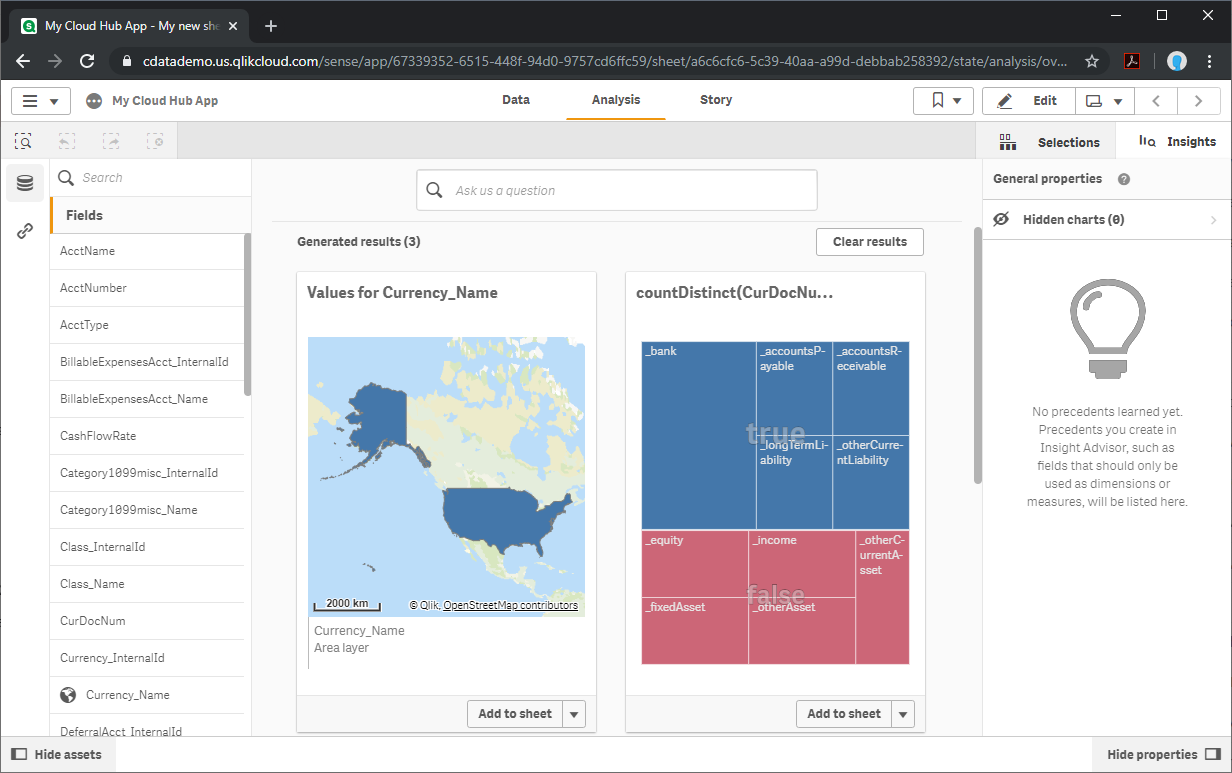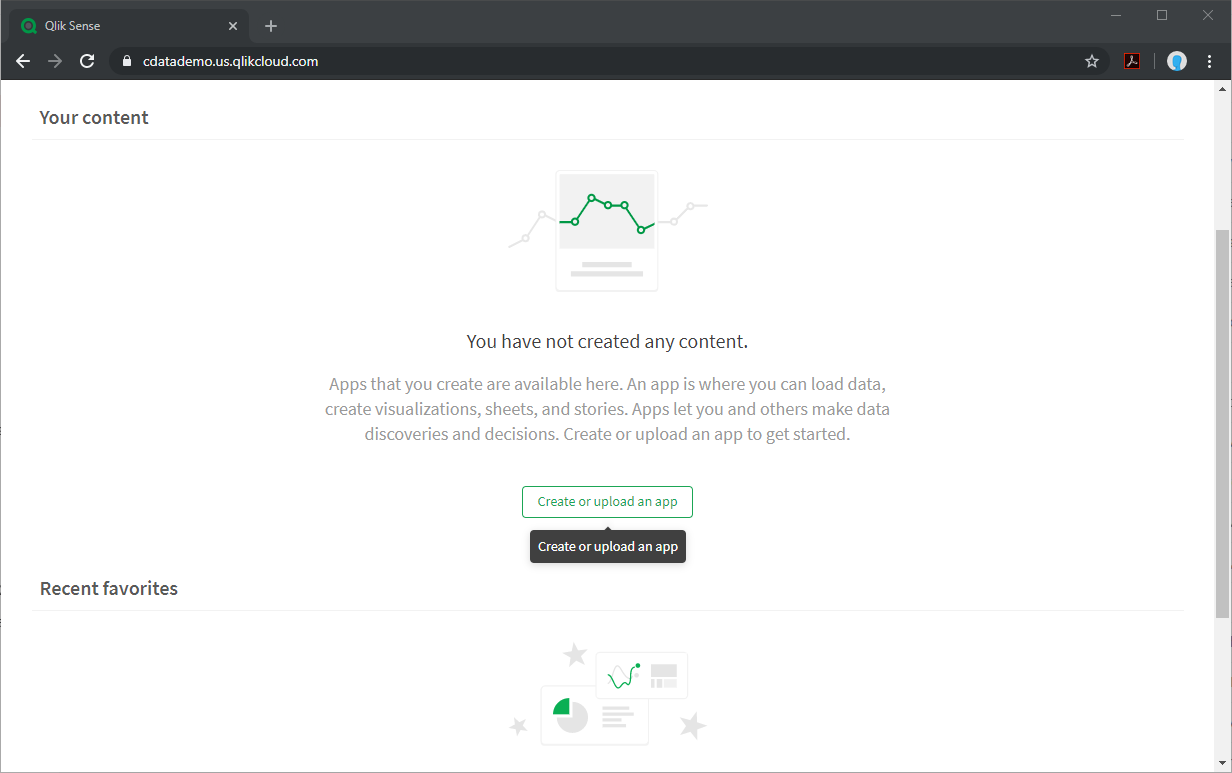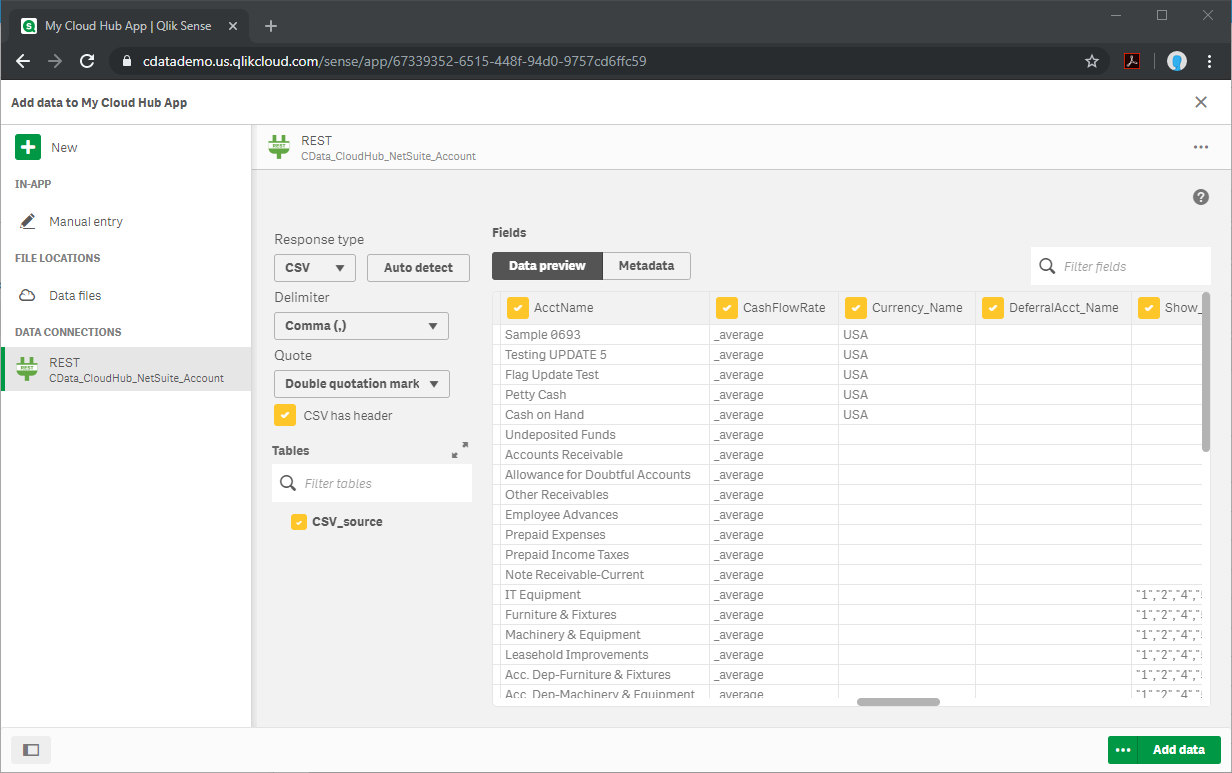Discover how a bimodal integration strategy can address the major data management challenges facing your organization today.
Get the Report →Create Apps from IBM Cloud Object Storage Data in Qlik Sense Cloud
Use the CData Connect Server to create an OData API for IBM Cloud Object Storage data and build apps from live IBM Cloud Object Storage data in Qlik Sense Cloud.
Qlik Sense Cloud allows you to create and share data visualizations and interact with information in new ways. The CData Connect Server creates a virtual database for IBM Cloud Object Storage and can be used to generate an OData API (natively consumable in Qlik Sense Cloud) for IBM Cloud Object Storage. By pairing Qlik Sense Cloud with the CData Connect Server, you get live connectivity to all of your SaaS and cloud-based Big Data and NoSQL sources — no need to migrate your data or write your integrations. Simply connect to Connect Server from Qlik Sense Cloud as you would any other REST service and get instant, live access to your IBM Cloud Object Storage data.
In this article, we walk through two connections:
- Connecting to IBM Cloud Object Storage in Connect Server
- Connecting to Connect Server from Qlik Sense Cloud to create a model and build a simple dashboard
Configure Connect Server to Connect to IBM Cloud Object Storage
To connect to IBM Cloud Object Storage data from Qlik Sense Cloud, you need to configure IBM Cloud Object Storage access from your Connect Server instance. This means creating a user, connecting to IBM Cloud Object Storage, adding OData endpoints, and (optionally) configuring CORS.
Add a Connect Server User
Create a Connect Server User to connect to IBM Cloud Object Storage from Qlik Sense Cloud.
- Click Users -> Add
- Configure a User
![Creating a new user]()
- Click Save Changes and make note of the Authtoken for the new user
![Connect Server users]()
Connect to IBM Cloud Object Storage from Connect Server
CData Connect Server uses a straightforward, point-and-click interface to connect to data sources and generate APIs.
- Open Connect Server and click Connections
![Adding a connection]()
- Select "IBM Cloud Object Storage" from Available Data Sources
- Enter the necessary authentication properties to connect to IBM Cloud Object Storage.
Register a New Instance of Cloud Object Storage
If you do not already have Cloud Object Storage in your IBM Cloud account, follow the procedure below to install an instance of SQL Query in your account:
- Log in to your IBM Cloud account.
- Navigate to the page, choose a name for your instance and click Create. You will be redirected to the instance of Cloud Object Storage you just created.
Connecting using OAuth Authentication
There are certain connection properties you need to set before you can connect. You can obtain these as follows:
API Key
To connect with IBM Cloud Object Storage, you need an API Key. You can obtain this as follows:
- Log in to your IBM Cloud account.
- Navigate to the Platform API Keys page.
- On the middle-right corner click "Create an IBM Cloud API Key" to create a new API Key.
- In the pop-up window, specify the API Key name and click "Create". Note the API Key as you can never access it again from the dashboard.
Cloud Object Storage CRN
If you have multiple accounts, you will need to specify the CloudObjectStorageCRN explicitly. To find the appropriate value, you can:
- Query the Services view. This will list your IBM Cloud Object Storage instances along with the CRN for each.
- Locate the CRN directly in IBM Cloud. To do so, navigate to your IBM Cloud Dashboard. In the Resource List, Under Storage, select your Cloud Object Storage resource to get its CRN.
Connecting to Data
You can now set the following to connect to data:
- InitiateOAuth: Set this to GETANDREFRESH. You can use InitiateOAuth to avoid repeating the OAuth exchange and manually setting the OAuthAccessToken.
- ApiKey: Set this to your API key which was noted during setup.
- CloudObjectStorageCRN (Optional): Set this to the cloud object storage CRN you want to work with. While the connector attempts to retrieve this automatically, specifying this explicitly is recommended if you have more than Cloud Object Storage account.
When you connect, the connector completes the OAuth process.
- Extracts the access token and authenticates requests.
- Saves OAuth values in OAuthSettingsLocation to be persisted across connections.
![Configuring a connection (SQL Server is shown).]()
- Click Save Changes
- Click Privileges -> Add, and add the new user (or an existing user) with the appropriate permissions (SELECT is all that is required for Reveal)
Add IBM Cloud Object Storage OData Endpoints in Connect Server
After connecting to IBM Cloud Object Storage, create OData Endpoint for the desired table(s).
- Click OData -> Tables -> Add Tables
- Select the IBM Cloud Object Storage database
- Select the table(s) you wish to work with and click Next
![Selecting a Table (SQL Server is shown)]()
- (Optional) Edit the resource to select specific fields and more
- Save the settings
(Optional) Configure Cross-Origin Resource Sharing (CORS)
When accessing and connecting to multiple domains from an application such as Ajax, there is a possibility of violating the limitations of cross-site scripting. In that case, configure the CORS settings in OData -> Settings.
- Enable cross-origin resource sharing (CORS): ON
- Allow all domains without '*': ON
- Access-Control-Allow-Methods: GET, PUT, POST, OPTIONS
- Access-Control-Allow-Headers: Authorization
Save the changes to the settings.

Create a Qlik Sense App from IBM Cloud Object Storage Data
With the connection to IBM Cloud Object Storage and OData endpoints created, we are ready to add IBM Cloud Object Storage data to a Qlik Sense app for visualizations, analytics, reporting, and more.
Create a New App and Upload Data
- Log into your Qlik Sense instance and click the button to create a new app
![Creating a new app]()
- Name and configure the new app and click "Create"
- In the workspace, click to open the new app
- Click to add data from files and other sources
![Selecting a connector]()
- Select the REST connector and set the configuration properties. For the most part, you will use the default values, with the following exceptions:
- URL: Set this to the API endpoint for your IBM Cloud Object Storage table, using the @CSV URL parameter to ensure a CSV response (i.e. CONNECT_SERVER_URL/api.rsc/IBMCloudObjectStorage_Objects?@CSV)
- Authentication Schema: Set this to "Basic"
- User Name: Set this to the user name you configured above
- Password: Set this to the Authtoken for the above user
- Click "Create" to query Connect Server for the IBM Cloud Object Storage data
- Check "CSV has header" and under "Tables," select "CSV_source"
- Select columns and click "Add data"
![Adding data to the app (NetSuite is shown.)]()
Generate Insights or Customize Your App
With the data loaded into Qlik Sense, you are ready to begin discovering insights. Click "Generate insights" to let Qlik analyze your data. Otherwise, you can build custom visualizations, reports, and dashboards based on your IBM Cloud Object Storage data.

More Information & Free Trial
Now, you have created a simple but powerful dashboard from live IBM Cloud Object Storage data. For more information on creating OData feeds from IBM Cloud Object Storage (and more than 200 other data sources), visit the Connect Server page. Sign up for a free trial and start working with live IBM Cloud Object Storage data in Qlik Sense Cloud.














